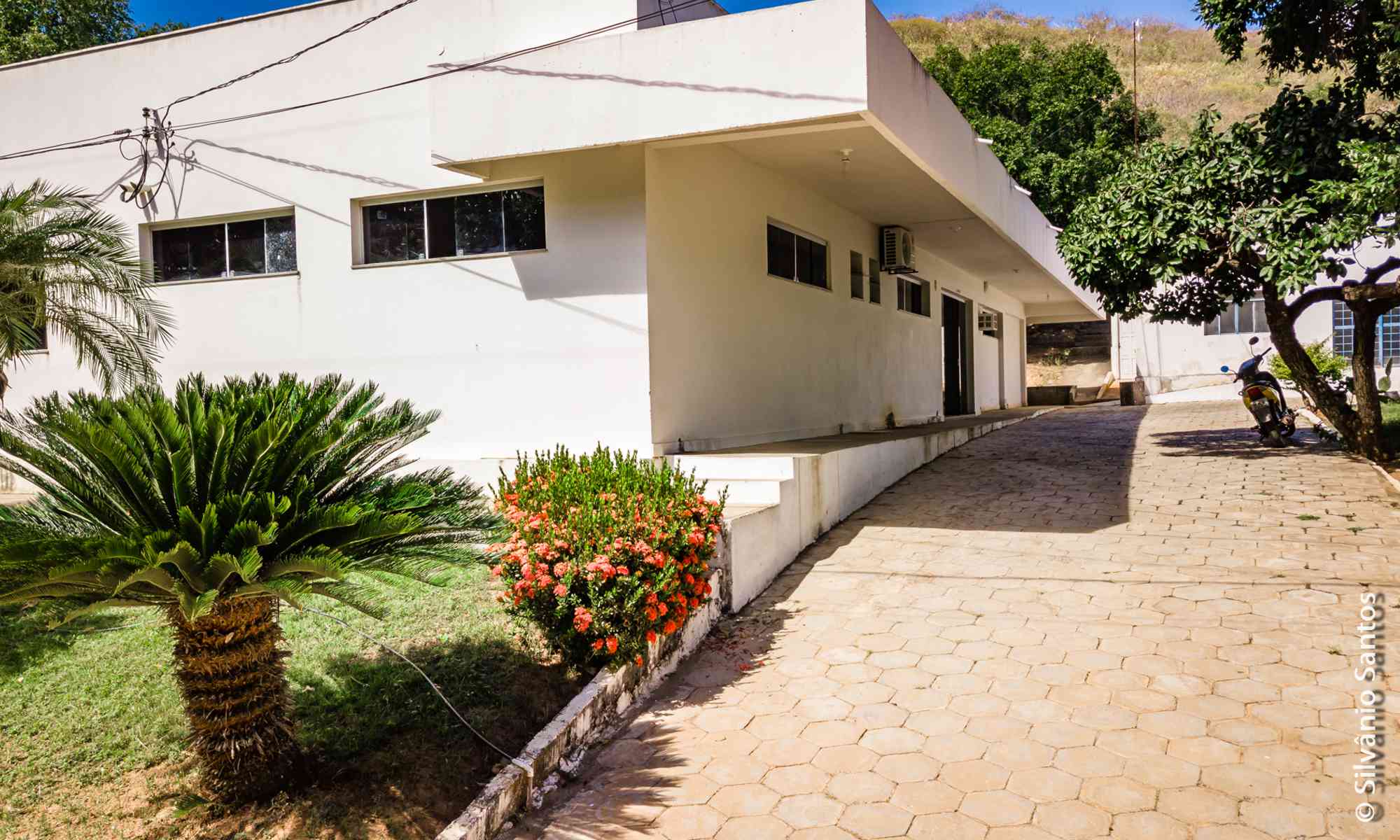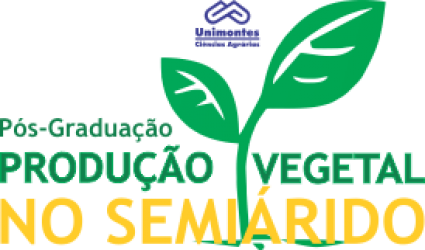- Version
- Download 31
- File Size 1.20 MB
- Create Date 10/06/2021
- Download
SIQUEIRA, Célia Lúcia. Crescimento e produção da bananeira ‘Prata Gorutuba’ em plantio adensado. 2018. 77 p. Tese (Doutorado em Produção Vegetal no Semiárido) – Universidade Estadual de Montes Claros, Janaúba, 2018.
O incremento da densidade de plantas, diferentes tipos de manejo na desbrota e a utilização de microrganismos benéficos têm sido adotados como alternativas para ampliar a produtividade e produzir de maneira sustentável. O trabalho objetivou avaliar o crescimento e produção da bananeira ‘Prata Gorutuba’, em dois ciclos produtivos no semiárido mineiro submetidos a plantio de mudas inoculadas com bactérias endofíticas em diferentes espaçamentos. A aclimatização das mudas micropropagadas foi realizada em casa de vegetação em dois sistemas: tubetes (60 dias de aclimatização) e sacolas (120 dias de aclimatização). Para realizar a microbiolização da mudas de bananeira foram utilizados cinco isolados bacterianos provenientes do laboratório de Fitopatologia da Universidade Estadual de Montes Claros - Unimontes. Após multiplicação das bactérias em laboratório, procedeu-se a mistura equitativa dos cinco isolados, e 25 mL da suspensão foi aplicada às mudas em intervalos de vinte dias. Somente metade das mudas produzidas no sistema de sacolas recebeu a inoculação bacteriana. O delineamento experimental foi o de blocos casualizados, com quatro repetições, nove tratamentos, sendo cada parcela composta por 20 plantas, utilizando as seis plantas centrais como parcela útil. Utilizou mudas de tubetes no tratamento 1 e de sacolas nos demais e a densidade de plantio variou de 1.680 a 3.920 plantas ha-1 associada a diferentes tamanhos de mudas e tipos de desbrota. As características de crescimento foram avaliadas somente no primeiro ciclo produtivo. Entretanto, as avaliações de produção, análises físicas e químicas dos frutos, produtividade, renda bruta e líquida foram realizadas para o primeiro e segundo ciclos. Os dados obtidos foram submetidos à análise de variância e as médias comparadas entre si pelo teste de Scott-Knott, a 5% de probabilidade. Para as características vegetativas, ajustaram-se as curvas de crescimento logístico e as taxas foram obtidas pela derivada primeira da equação ajustada. Foram realizadas análises econômicas referentes à produtividade, renda bruta e líquida de forma descritiva. A aplicação das bactérias endofíticas nas mudas em casa de vegetação, processo considerado microbiolização, proporcionou incremento no tamanho das mudas, no entanto, quando as mudas foram levadas ao campo não foram observadas diferenças entre plantas que receberam microbiolização com as demais que não foram microbiolizadas. O adensamento influencia no alongamento do ciclo, do plantio à emissão do cacho no primeiro ciclo de produção. No primeiro ciclo de produção, o tratamento com maior densidade de plantas (3.920 plantas ha-1) proporciona maior produtividade e renda bruta, seguido pelo tratamento com 1.680 plantas ha-1, com uso de bactérias endofíticas e redução de 50% de nitrogênio, em relação à renda bruta. Os tratamentos adensados com mais de 3.000 plantas ha-1 apresentam maiores produtividades e renda bruta no segundo ciclo produtivo. O manejo da desbrota mostrou efeito significativo no aumento do ciclo para os tratamentos com desbrota total até dez meses de idade e desbrota total até a colheita. A restrição hídrica de 42% e 43%,para o primeiro e segundo ciclo respectivamente, influencia negativamente nas características vegetativas e produtivas da bananeira ‘Prata Gorutuba’ no semiárido mineiro.
Palavras-chave: Musa spp.; espaçamento; Bacillus sp.; déficit hídrico; bactérias promotoras do crescimento em plantas (BPCP)
Growth and production of the 'Prata-Gorutuba' banana tree in densely planted
The increase of plant density, different types of management in the crop and the use of beneficial microorganisms have been adopted as alternatives to increase the productivity and to produce in a sustainable way. The objective of this work was to evaluate the growth and production of the ‘Prata Gorutuba’ banana, in two productive cycles in the semiarid state of Minas Gerais, submitted to planting of seedlings inoculated with endophytic bacteria at different spacings. The acclimatization of the micropropagated seedlings was carried out in a greenhouse in two systems: tubes (60 days of acclimatization) and bags (120 days of acclimatization). To perform microbiolization banana seedlings were used five strains from the laboratory of Plant Pathology, University of Montes Claros - Unimontes. After multiplication of the bacteria in the laboratory, the five isolates were equally mixed, and 25 mL of the suspension was applied to the seedlings at twenty day intervals. Only half of the seedlings produced in the bag system received bacterial inoculation. The experimental design was a randomized block design, with four replications, nine treatments, each plot consisting of 20 plants, using the six central plants as a useful plot. It used tubule seedlings in treatment 1 and bags in the others and the planting density ranged from 1,680 to 3,920 ha-1 plants associated with different seed sizes and types of seedlings. The growth characteristics were evaluated only in the first productive cycle. However, the production evaluation, physical and chemical analyzes of fruits, productivity, gross and net income were performed for the first and second cycles. The data were submitted to analysis of variance and the means were compared to each other by the Scott-Knott test, at 5% probability. For the vegetative characteristics, the logistic growth curves were adjusted and the rates were obtained by the first derivative of the adjusted equation. Economic analyzes were performed regarding productivity, gross and net income in a descriptive way. The application of endophytic bacteria in the greenhouse, a process considered microbiolization, provided an increase in the size of the seedlings, however, when the seedlings were taken to the field, differences were not observed between plants that received microbiolization with the others that were not microbiolized. The densification influences the elongation of the cycle, from the planting to the emission of the bunch in the first production cycle. In the first production cycle, the treatment with higher density of plants (3,920 plants ha-1) provides higher productivity and gross income, followed by treatment with 1,680 plants ha-1, using endophytic bacteria and 50% nitrogen reduction, in relation to gross income. The densified treatments with more than 3,000 ha-1 plants present higher yields and gross income in the second productive cycle. The management of the crop showed a significant effect on the increase of the cycle for the treatments with total sowing until 10 months of age and total sowing until harvest. The water restriction of 42% and 43%, for the first and second cycle, respectively, negatively influences the vegetative and productive characteristics of the banana ‘Prata Gorutuba’ in the semiarid region of Minas Gerais.
Keywords: Musa spp.; spacing; Bacillus sp.; water deficit; growth-promoting bacteria in plants (GPBP)

